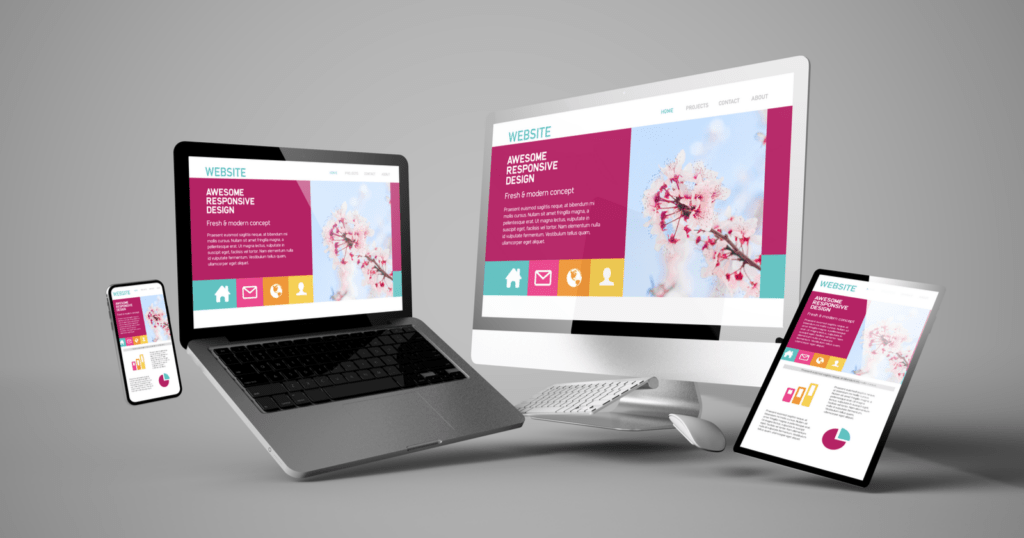Modern Web Site Layout That Catches Focus and Transforms
In an increasingly electronic landscape, modern-day website style has emerged as an essential variable in recording user interest and driving conversions. As we discover these necessary elements, it ends up being clear that understanding their interaction can considerably influence an internet site's performance and customer satisfaction.
Relevance of Visual Pecking Order
Visual pecking order is a critical element in website design, as it guides customers' interest and boosts their general experience. By purposefully organizing web content, developers can guide customers to the most essential information first, therefore boosting engagement and enhancing use.
Integrating a sensible flow in web content setup is vital; for instance, placing one of the most essential information at the top of a web page promotes instant acknowledgment. Furthermore, constant use typography, such as varying font dimensions and styles, helps establish a clear material structure. This organization not just help in navigation yet additionally builds count on, as users really feel more comfortable when they can quickly locate what they are seeking.
Inevitably, a well-executed aesthetic hierarchy not just enhances visual appeal yet likewise substantially impacts customer habits. By focusing on necessary elements and ensuring a smooth experience, designers can efficiently convert visitors into customers, reinforcing the importance of this foundational design concept in modern website advancement.
Responsive Layout for All Instruments
Developing a seamless experience throughout numerous devices is crucial in today's digital landscape, where customers accessibility internet sites from desktops, tablets, and smart devices alike. Receptive style is a critical technique that makes sure internet sites adapt fluidly to different screen resolutions, dimensions, and alignments. By using adaptable grids, images, and CSS media inquiries, designers can create layouts that preserve visual integrity and performance, despite the device being made use of.
The significance of receptive style prolongs beyond appearances; it directly affects customer involvement and conversion rates. A website that works well on all devices motivates longer gos to and reduces bounce rates, as customers are more probable to connect with content that is simple to navigate. Search engines, particularly Google, prioritize mobile-friendly websites in their positions, making receptive layout an essential component of search engine optimization (SEO)
Including responsive layout not only boosts customer experience yet also simplifies the development process. By creating a solitary website that functions across gadgets, services can conserve time and resources contrasted to developing different mobile and desktop computer versions. Inevitably, responsive layout is an essential technique for contemporary internet site layout, guaranteeing availability and satisfaction for all customers, no matter their gadget.
Engaging Interactive Elements
While a receptive design prepares for a useful website, incorporating interesting interactive components is vital for catching individual interest and cultivating deeper links. Website Design. Interactive aspects, such as computer animations, tests, and clickable infographics, develop a more dynamic customer experience, encouraging visitors to spend more time on the site
Including interactive features can also lead customers with complicated info, making it easier to digest content. For instance, interactive sliders can highlight item variations, while embedded videos can give demonstrations or endorsements that resonate greater than fixed photos or message. In addition, gamification strategies, like benefits for involving or finishing tasks with web content, can enhance customer description inspiration and retention.
Reliable use of interactive elements not only enriches the customer experience but can additionally lead to greater conversion prices. It is necessary to stabilize interactivity with performance; extremely complicated functions might hinder website rate, adversely affecting user complete satisfaction.
Structured Navigation Practices
Effective navigating is a keystone of any successful website, as it directly affects customer experience and content ease of access. Structured navigating methods make certain that individuals can easily situate details, boosting their interaction with the site. A well-structured navigating menu need to be user-friendly and simple, generally featuring a restricted variety of key classifications to stay clear of overwhelming site visitors.
To accomplish streamlined navigating, designers ought to focus on a hierarchical framework that practically arranges content. Implementing breadcrumb routes can provide individuals with context regarding their existing location within the site, allowing for smooth backtracking. In addition, making use of drop-down food selections can properly save room while still offering access to subcategories.
Responsive design is crucial, as navigation should be useful Extra resources throughout all tools (Website Design). Mobile users, particularly, advantage from touch-friendly food selections and collapsible sections that maintain functionality without jeopardizing appearances

Effective Call-to-Action Strategies
A well-crafted call-to-action (CTA) is important for leading individuals toward preferred outcomes on an internet site, as it motivates them to involve with content or make an acquisition. To maximize their effectiveness, CTAs should be clear, engaging, and tactically placed throughout the website.
First, make use of action-oriented language that interacts urgency or value, such as "Get going," "Join Now," or "Claim Your Discount." This language not only encourages users yet likewise sets clear expectations concerning the following steps.
Second, take into consideration design aspects; CTAs ought to stand apart visually through contrasting colors, enough whitespace, and popular positioning. A button that is very easy to see and click rises the probability of user communication.
Additionally, personalizing CTAs based upon user actions or demographics can significantly enhance involvement. Customized messages resonate much more with users, driving higher conversion rates.

Final Thought
These elements collectively boost individual experience, guaranteeing that visitors remain involved and inspired to check out web content additionally. By focusing on these design principles, businesses can substantially improve user retention and conversion rates, ultimately leading to better success in the electronic landscape.
In a progressively digital landscape, modern-day website design has actually emerged as a pivotal factor in catching user attention and driving conversions.Visual pecking order is a vital element in web site style, as it guides customers' interest and enhances their total experience.The relevance of receptive style expands beyond appearances; it directly affects customer interaction and conversion rates.Including receptive style why not try these out not just boosts individual experience but additionally improves the growth process. Eventually, receptive layout is an essential approach for modern-day site design, guaranteeing ease of access and satisfaction for all customers, regardless of their tool.